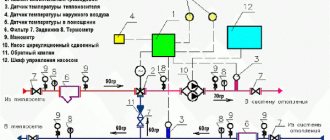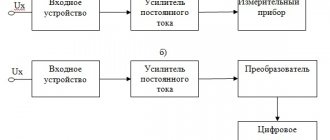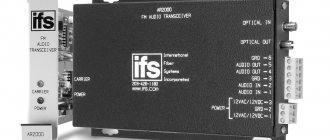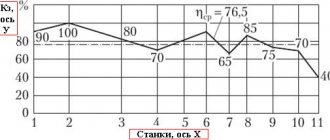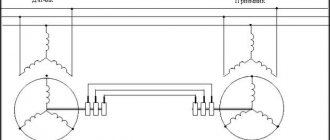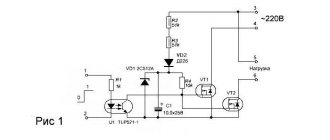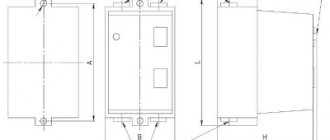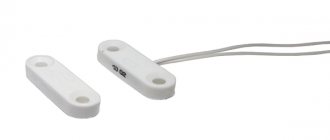November 25, 2013
SIEMENSarticlePromavtomatika
At the design stage, it is very difficult to foresee all the nuances of the technological process of future production due to the large number of interrelated conditions. At the same time, even an impeccably executed project can cause a lot of trouble for the developer if any unforeseen changes need to be made to it. A revolutionary breakthrough in industrial automation was the transition from actuators with a once and forever embedded function to flexible modular units with a configuration that can be changed according to current requirements.
Siemens programmable controllers
This type of device is in demand in a variety of fields - metallurgy, mechanical engineering, chemical and food industries, logistics. Siemens programmable controllers are represented by two main series - LOGO! and Simatic. Each model has the following technical and operational characteristics:
LOGO!
LOGO! This line of Siemens peripherals and controllers is characterized by its small size and versatility. PLCs are used to make automated control devices that are designed for logical data analysis. The modules interact with each other using commands built into memory. The controllers are controlled using specialized software (LOGO! Basic) or a built-in keyboard. Another advantage of the PLC line LOGO! is its low cost, thanks to which this series is considered the optimal solution for developing new systems or full-scale updating of existing ones.
Siemens Simatic S7
Simatic S7-300 and range . Designed to solve problems of increased complexity. Controllers of this series have the ability to use a large number of additional modules that change or expand the existing functionality of the system. The devices feature power regulation and a free cooling system to simplify operation and increase reliability. There is a comprehensive list of built-in functions that solve any automation task. Device control is available via a digital interface.
Siemens S7-1200 and series . Based on solutions from previous generations of Siemens devices, the controller is designed to automate systems of any level of complexity. Built-in functionality can be expanded with additional modules. Despite the high performance and stability of operation, the cost of the controllers remains at a level accessible to a wide range of consumers. 1200/1500 series controllers support the TIA (Totally Integrated Automation) concept and are capable of exchanging data via multiple communication channels - Ethernet, Profinet, P2P, PROFIBUS, Modbus, AS-Interface, USS, ASCII.
Siemens SIMATIC HMI. Operator panel designed for the development and maintenance of Simatic microcontrollers via HMI (human-machine interface). Includes software such as Simatic Protool, Simatic WinCC Flexible and Simatic WinCC. Operator panels are made in 3 versions for different conditions of use and technological requirements - key panels, basic panels, comfort panels and mobile panels.
How did it all begin?
It all started with the construction of relay contact control systems, which were huge cabinets filled with wires and relay modules. Signals from sensors came to these cabinets, and commands to actuators were generated at the output. In addition to the fact that they were large, such control systems are inconvenient because they are not flexible at all: in order to change the control logic, it is necessary to manually go through the entire electrical circuit. With the development of microprocessor technology, relay cabinets were replaced by PLCs - devices that perform the same functions, but have a fundamentally different mechanism for converting input signals into output signals. This conversion to the PLC is carried out according to the recorded program. With the advent of controllers, the size of control systems has decreased tenfold, and the process of their development and subsequent changes has been significantly simplified.
SIEMENS software
Industrial software is a system of interconnected tools for programming and operating Siemens automated systems. These components include the full functionality required for all stages of development and use of an automated control system. We offer the following solutions:
- TIA . An integrated software development environment for Siemens automation systems, covering all levels - from drives and controllers to the human-machine interface.
- WinCC . An HMI system designed for visualizing the technological process, setting up communications with microcontrollers, creating redundant systems and extensions for them.
- Step 7 . Software for creating automated systems based on Simatic programmable logic controllers (S7-300/400, M7, C7).
Design and operating principle
A programmable module is the same PC, only in a smaller format. Siemens rlu, logo, lcd, Allenbernecker, Bradley, desigo, pxc, rainer, rmu, rmub, rvd, rvs, rwd, rwx controllers consist of the same parts: cpu processor, microprocessor, microcircuit, integrated circuit, power supply, disk.
The brain of the entire PLC system is the CPU module. This module is usually located near the power source. Manufacturers offer different types of processors based on the complexity required for the system.
The processor consists of a microprocessor, a memory chip, and other integrated circuits for logic control, monitoring, and communication. PLC has different operating modes. In programming mode, it receives information from the PC, making it possible to complete even very complex tasks.
Connection diagram of the controller to the PC
Siemens power supplies
Energy sources ensure uninterrupted operation of industrial equipment. The Siemens SITOP line includes the Smart, Compact, Modular and LOGO!Power series. All power supplies we sell have a GOST R certificate of conformity and the following operational features:
- high efficiency;
- precise stabilization and minimal ripple of the output voltage with unstable input values;
- separation of input and output circuits using a galvanic element;
- work under natural cooling conditions.
Below is a detailed description of Siemens SITOP models:
- LOGO! Power. Manufactured as compact logic modules, this line of devices can accept a wide range of AC input voltages. Power supplies are capable of operating under unstable load conditions, delivering voltages from 5 to 24 volts.
- Smart and Compact. Compact power supplies with high overload capacity (up to 150%). They effectively protect equipment from short circuits, voltage surges and circuit overloads.
- Modular. Siemens power supplies of this brand have a modular design. They are complemented by various components that provide the ability to reserve, buffer, manage and analyze network parameters. The basic package includes a stabilized power supply with single-, two- or three-phase AC input voltage. The output voltage produced by the unit does not exceed 24 volts and has a current strength of 5-40 amperes. All power supplies of the SITOP Modular series are produced and sold in compact metal cases and have a protection level of IP20. The devices are mounted on profile rails that comply with the DIN standard.
PLC operating principle
The PLC operates on a cyclic principle. At the very beginning of the cycle, the PLC scans the states of the inputs that receive signals from sensors and devices. Then, in accordance with the program algorithm, the state of the outputs is calculated. At the end of the operating cycle, the controller sets each output to the state that was defined.
1. Reading input states
2. Execute the user program
3. Recording output states
The specified stages of the cycle are executed sequentially - this means that changes in input states will not be “noted” by the controller during program execution. For this reason, one of the most important parameters of a PLC is its response time . If it turns out to be greater than the minimum period for changing input states, some events occurring in the system will be “missed” by the controller.
It is also worth considering that sensors do not respond instantly to changes in the system. Therefore, the total response time of the control system is the sum of the PLC response time and the sensor response time.
System reaction time is the time from the moment the system state changes until the corresponding reaction is developed (decision making).
Modular I/O stations
SIMATIC ET200SP is a multifunctional modular station with IP20 protection level. Designed for distributed I/O systems based on PROFINET IO and Profibus DP networks. Supports information transfer rates up to 100 Mbit/s (PROFINET) and up to 12 Mbit/s (Profibus). Due to the modular architecture, it can be easily adapted and reconfigured for use for various production purposes. Supports installation of 64 modules simultaneously, and they can be replaced “hot” (without stopping the system). Siemens SIMATIC ET200SP is compatible with standard DIN profile buses 35x15x7.5 and 35x15x15 millimeters.
Our company develops, designs and implements automated systems, provides support in the operation and modernization of production equipment. You can order devices or services from our specialists by calling: +7(495) 64-220-64.
We are partners of Siemens.
SIMATIC ET200SP Manual
Real-time systems
All systems can be divided into hard and soft real-time systems.
In hard real-time systems, the PLC response must not exceed a certain time threshold. As the reaction time increases, the system loses its functionality.
soft systems, as the response time increases, the quality of control may deteriorate significantly, but performance is not lost.
Digital PLC interfaces
PLCs were originally designed to control sequential logical processes. Modern controllers, in addition to logical operations, are capable of performing digital signal processing. They can exchange information with other devices, such as operator panels, GSM modules, frequency converters, data collection servers, etc.
PLCs can have a distributed structure, when the input and output modules are located at a considerable distance from the controller itself, near the control object. Several PLCs that control different parts of one system can be combined into a network to exchange information and coordinate control actions, as well as transfer all information about the system to a central control center.
In these cases, the exchange of remote modules and devices with the PLC is carried out via digital interfaces using specialized protocols such as Modbus RTU, ModBus TCP, CANopen, Profibus, EtherNet IP and others.
Sources:
https://electrik.info/main/automation/710-princip-raboty-i-osnovy-programmirovaniya-plk.html https://www.asutpp.ru/kontrollery-siemens.html https://pikabu.ru/ story/kak_i_obeshchal_programmirovanie_promyishlennyikh_kontrollerov_siemens_5699847 https://electricalschool.info/automation/1654-programmiruemye-kontrollery-siemens.html https://lazysmart.ru/osnovy-avtomatiki/programmiruemy-e-logicheskie-kontroll/
PLC inputs and outputs
Discrete inputs – designed for inputting signals from discrete sensors (buttons, toggle switches, limit switches, thermostats, etc.). The signal voltage is unified for all PLCs and is 24 V. Simply put, when a voltage of 24 V “appears” at the controller input, the PLC will consider this input “on”, that is, it will take the value of logical “1” in the perception of the controller.
Discrete outputs – designed to control devices using the “on/off” principle (magnetic starters, light bulbs, valves, etc.). A discrete output is a regular contact that can close or open the control or power circuit of a device.
Analog inputs – designed to input continuous signals from sensors and other devices. There are two main types of unified analog signals: current - 4..20 mA, voltage 0..10 V. For example, a temperature sensor has a range of -10 - +70 °C, then 4mA at the output corresponds to -10 °C, and 20mA is +70 °C. With analog voltage signals everything is similar.
Analog outputs – designed for smooth control of devices. The unified values of the analog signal at the outputs are the same as at the inputs - 4..20mA (0..10V). For example, the valve can be rotated between 0° and 90°. A current of 4mA will turn it to the 0° position, and 20mA will turn it to the 90° position. In order to rotate it by 45°, you need to apply an 8mA control signal to it. Thus, by changing the value of the output current, the controller can rotate the valve to a given angle.
Specialized inputs/outputs are not unified, they are used to connect non-standard sensors and actuators with a specific signal level, power supply and software processing.
